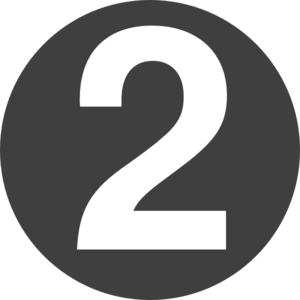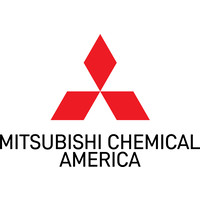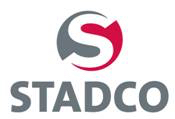Information
-
Audit Title
-
Document No.
-
Client / Site
-
Conducted on
-
Prepared by
-
Location
-
Personnel
-
The purpose of this checklist is to act as a guide in determining if any anomalies exist on the line or in the FT-50 equipment itself that limits the performance of the system.
-
While making the check of the systems, have the available maintenance personnel accompany you.
-
These checks will be an excellent opportunity to do training as well as exchanging information.
-
In most cases, anomalies can be immediately corrected as you find them.
-
Do not make any changes or corrections unless you have consulted with the customer.
-
MACHINE SN:
-
SOURCE SN:
-
LINE NUMBER:
-
Software Version:
-
Machine Type:
-
Bottle or Can
-
Does the customer have any known or existing problems?
Conveyors
-
Is the conveyor braced so that it does not move under the Inspection head?
-
Is the conveyor level, not running at an angle through the Inspection zone?
-
Is the chain in good condition?
-
Are there any new and old sections of chain mixed together?
-
Are the containers on the conveyor stable (no erratic movement?)
-
Conveyor material
-
Conveyor type
-
Measure 10 conveyor links and note the value
Physical Installation
-
The inspection Head should be level and properly braced
-
Is the Inspection Head level over the conveyor - should be parallel to the container fluid.
-
Is the Inspection Head braced so that it does not move? (If it is not properly braced then the Inspection Head could move and cause false rejects.)
Conveyor Guide Rails
-
Guide rails should be adjusted properly to guide containers in a non-staggered path through the Inspection tunnel and rejection zone.
-
Do the guide rails guide the containers through the center of the inspection tunnel with no slippage on the conveyor?
-
Is the customer aware that if changeovers occur only the rails across from the rejector should be adjusted. This ensures that the containers are in the same location in regards to the rejector (1/8" from the rejector pad).
-
Are the containers 1/8" from the rejector pad?
Rejector
-
Rejector Type
- Proline
- Proline II
- Intermediate
- Slat
- Servotec I
- Servotec II
-
Any Loose hardware found?
-
Rejector pad in good condition?
-
Rejector pad retainer clip in place?
-
Rejector mounted properly? (not loose, correct pad distance -1/8" from the containers)
-
Rejector rail opening correctly sized for the line speed? <br>
-
should be a minimum 8" add an inch for each 100 containers per minute. Example 1500 cpm = 15 inch opening
-
Is the rejector timing correct (use white grease)
-
Do containers backup into the rejection zone?
-
The air controls should be clean and adjusted correctly. Oil (if required - original Proline) should be the proper type and viscosity.
-
Are the air controls for the rejector adjusted approximately 60 to 80 psi.
-
Are the air controls correct for the rejector being used?
-
Is oil used for the rejector? (Proline, Slat only)
-
Is the oil 5 wt, non-detergent, food-grade oil. (Proline, Slat only)
-
Rejector Options
-
Backup sensor installed?
-
Reject verification installed?
-
Reject verification functional?
-
Reject performance monitoring installed?
Inspection Trigger
-
What trigger raising mechanism installed? (If old dovetail-style, recommend upgrade to new raising mechanism)
-
Trigger Configuration
-
Trigger type
-
Trigger clean?
-
Any damage found with the trigger?
-
Does the plant have a cleaning procedure in place?
Inspection Head
-
Inspection head properly sealed?
-
Air purge installed and functional?
-
"Yellow" indicator lamp functional?
-
"Yellow" indicator lense damaged?
-
"Red" indicator lamp functional? ( Auto Shutter versions only)
-
"Red" indicator lense damaged? ( Auto Shutter versions only)
-
"Green" indicator lamp functional? ( Auto Shutter versions only)
-
"Green" indicator lense damaged? ( Auto Shutter versions only)
-
Encoder Installed?
-
Encoder Coupling in good condition?
-
Encoder Shared with another unit?
-
Encoder Properly Calibrated?
PLC - I/O Power Junction Box
-
PLC - I/O Power Junction Box installed?
-
Relays used?
-
Using Modbus?
-
IDC Serial interface?
Line Dynamics - Product Info
-
Container Size during Visit?
-
Number of Container types?
- 1
- 2
- 3
- 4
- 5
- 6
- 7
- 8
- 9
- 10
- 11
- 12
- 13
- 14
- 15
- 16
- 17
- 18
- 19
- 20
-
Head Heights?
-
Notes
Machine Parameters
-
Button #1 - Fill Level Settings
-
Gamma Counts - Full Container
-
Gamma Counts - Empty Container
-
Gamma Threshold
-
Look time gate
-
Button #4 - Rejector Settings
-
Rejector Pulse Width
-
Reaction Delay
-
Inspection Trig to C/L Rej (Value - Should be within ±10mm of measured distance)
-
Inspection Trig to C/L Rej (measured distance)
-
Button #5 System Settings
-
Time Width of container
-
Container Width at Trigger
-
Maximum Container diameter
-
Encoder Calibration Value
-
Pre-Scaler Value
-
Gamma Sample Cut-off Limit
-
Additional Service Required?
-
Does the plant have spare parts inventory? (If yes list)
Plant Contact Information
-
Plant Manager.
-
Maintenance Manager
-
Production Manager.
-
Quality Manager
Signatures
-
Service Engineer Signature
-
Maintenance Manager Signature










